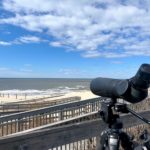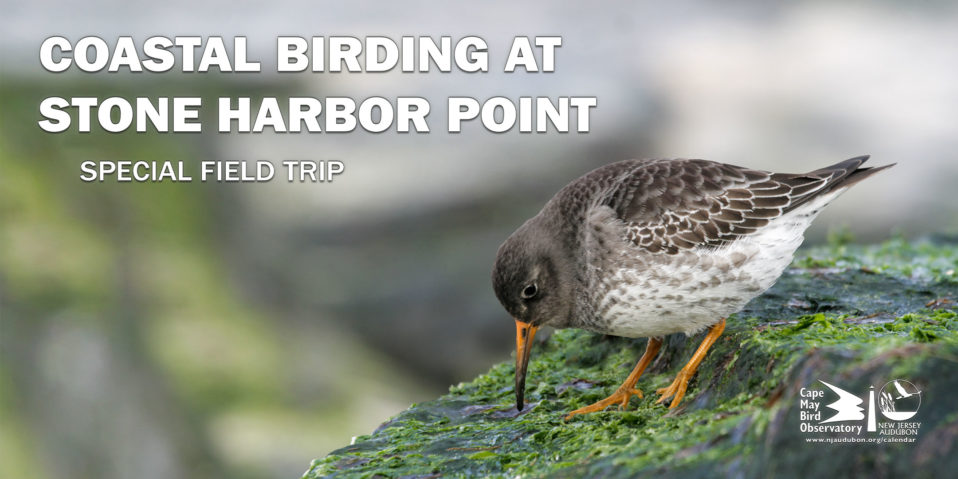Photo: Native Seedlings
Cape Island, which lies at the southern-most tip of New Jersey, is a human-made landmark separated from the mainland by the Cape May Canal. This popular vacation destination off Exit 0 of the Garden State Parkway attracts thousands of visitors each summer who are looking to enjoy the natural beauty of the beaches and the dining and shops found in the local towns. However, as summer settles down and the temperatures begin to cool, a new kind of visitor is attracted to Cape Island. With the right weather conditions and northwest winds, large concentrations of migrating wildlife pass through the oasis of forests, fields, beaches, and dunes that make up Cape Island. Thousands of songbirds, raptors, butterflies, and more make a much-needed stop to rest and refuel on the island before making the daunting journey across the Delaware Bay. As they continue south towards their winter destinations, an abundance of food and adequate shelter is key to their survival on this spectacular journey.
Although the natural areas found on the island are an integral part of the success of migrating wildlife, alien invaders have been threatening the health of these critical habitats. Over the past few decades, non-native invasive plants have blanketed the forests and fields while smothering and outcompeting native trees, shrubs, grasses, and forbs.
Native plants play an important role in the survival of wildlife, providing nutritious food, shelter from predators, and places to nest and raise young. In fact, many butterfly and moth caterpillars that act as a significant food source for songbirds and other species can only survive by feeding on native plants. The most well-known example of this is the relationship between the Monarch Butterfly and native species of milkweed. Native plants and the wildlife that depend on them have evolved together, striking a complex balance that supports healthy ecosystems. While native plants offer a wide variety of resources to many wildlife species, non-native invasive plants disrupt that balance and offer very little to resident and migrating wildlife. This is why New Jersey Audubon is taking on these alien plant invaders.
As birds and other wildlife journey through Cape Island during their migration, they will undoubtedly spot a 25-acre patch of woods along Seagrove Avenue in Lower Township. These woods are within the boundaries of Cape May Point State Park, owned and managed by the NJ Division of Parks and Forestry. Like many of the forests surrounding Cape Island, this patch of woods has been severely impacted by porcelain berry, privet, sweet-autumn clematis, and other non-native invasive plants. In 2005, Cape May Point State Park and NJ Audubon joined forces to restore this patch of woods by combating the invasive plant species found there. After careful planning and consideration, the restoration project began in 2011 in a small section of the woods. Combining the use of a forestry mower, herbicide applications, and volunteer efforts, the invasive plants that plagued the woods were selectively targeted for removal. After several years of repetitive management, young native plants began to grow in the woods once again. The seeds of these native plants had waited patiently in the soil, only to emerge once non-native invasive plants were removed and enough sunlight and resources were available for them to thrive.
Nearly a decade later, NJ Audubon and Cape May Point State Park have begun restoration efforts in a larger section of these woods, thanks to a grant from U.S. Forest Service secured by our partners at the NJ Invasive Species Strike Team. Beginning in March of 2019, 12 acres of invasive vines and shrubs were mowed. Now that summer is winding down, those same 12 acres of invasive plants will be treated by selectively applying herbicide. Since these non-native invasive plants are aggressive, aggressive tactics, such as forestry mowing and herbicide use, must be used to combat them; however, once native plants begin to thrive in these woods, these management activities can become less intensive. As restoration activities continue, NJ Audubon and Cape May Point State Park will monitor the regeneration of native plants while staying on top of any invasive plants that will inevitably linger.
While tackling the invasive plant populations at Cape May Point State Park, NJ Audubon staff are also working to restore the genetic diversity of the native plant community. With funding from Atlantic City Electric, NJ Audubon is carefully collecting seed from native tree and shrub populations throughout Cape May County. The seed collection follows strict protocols created by the Bureau of Land Management to ensure that seed collected from stable populations is harvested sustainably. Once collected, the seed will be cleaned and sent to a local nursery for propagation. In just a few years, a local provenance of native trees and shrubs sourced from local ecotypes will be planted at Cape May Point State Park. Selecting plants that are native to the area and come from nearby populations will greatly increase their chances of survival, as they will be well adapted to the soils and climate of Cape May. This effort will also help preserve the native genetic diversity of the plant populations in the area.
Although it will take several years of consistent management for the restoration project to truly be considered a success, there are signs that the forest is already beginning to recover. If you happen to visit Cape Island, be sure to take a walk past these woods, and take a look and listen for wildlife that are using the resources from this healing forest.
For more information, visit www.njaudubon.org/cape-may-point or contact the New Jersey Audubon’s Stewardship Department at 609-400-3843.
By Kristen Meistrell,
Stewardship Project Director – South













